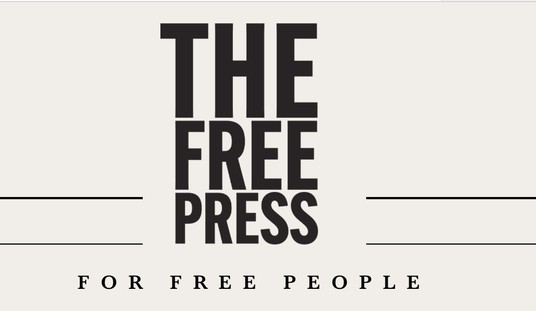Governors in all 50 states, the District of Columbia, Puerto Rico, Guam, and the U.S. Virgin Islands have activated components of their Army and Air National Guard, the reserve component of the U.S military in response to the coronavirus pandemic. As many as 44,500 troops have been activated across the country to help mitigate and control the virus outbreak.
Their duties are varied and essential as an addition to state efforts when additional manpower is needed. Members of the National Guard aid in key efforts including:
*Supporting community-based testing sites.
*Creating enhanced medical capacity.
*Facilitating logistical support and transportation of key supplies.
*Assisting in state emergency operations centers.
*Providing labor for call centers.
*Packaging and distributing food and other supplies,
*Building facilities such as medical field hospitals.
*Cleaning and disinfecting common spaces.
Generally speaking, the funding of National Guard deployments falls on the states. However, if the deployment is a federalized response, the federal government pays the costs. Provisions have been made during the coronavirus pandemic through the president’s declarations and congressional legislation to pay for the deployments.
Funding to pay for guard deployments is generally the responsibility of the states, except when federally activated under Title 10 related to active duty military service or in the case of a Title 32 designation. Title 32 of the U.S. Code allows a governor to order guard members to report for operational homeland defense duties with the approval of the president or secretary of defense. As of April 9, 2020, 38 states and Guam and Puerto Rico have received designation from the federal government to operate under Title 32, with 11 additional requests pending.
Under this “federalized” status, guard troops still report to the governor, but the federal government pays the cost, which can run as much as $9 million per month per 1,000 troops mobilized, according to the chief of the National Guard Bureau. Under the President’s March 13 National Emergency Declaration, all states and territories qualify for 75% federal coverage of National Guard costs under the Federal Emergency Management Agency’s Public Assistance, which covers emergency protective measures. States who have been approved for a Major Disaster Declaration (which is nearly all), and that have activated the lesser of 500 individuals or 2 percent of National Guard personnel, can request a waiver of the 25% cost share. For approved states, FEMA will cover 100% cost of National Guard orders for up to 31 days. In addition, this status allows guard members to receive health, education and retirement benefits.
Additional funding for National Guard activities was part of HR 748, the Coronavirus Aid, Relief, and Economic Security Act (CARES Act), which appropriated $1.4 billion for deployments of the National Guard for the next six months to support state and local response efforts. This level of funding will sustain up to 20,000 members of the National Guard, under the direction of the governors of each state. More specifically, the funding allocates $746 million to the Army National Guard for response efforts both domestically and internationally, $186 million to the Army National Guard Operation and maintenance funding programs, $482 million to the Air National Guard for response efforts both domestically and internationally, and $75 million to the Air National Guard Operation and maintenance funding programs.
On Monday night, President Trump directed that states pick up some of the cost – 25% – with two exceptions, Texas and Florida. As you might imagine, Texas and Florida officials are happy with the carve-out while the governors of other states are not so happy. While parts of Texas and Florida remain as coronavirus hot spots, metrics in other states are worse in a few other states. Cries of favoritism arose immediately. Trump won Texas and Florida in 2016 and he needs both states in November for his re-election.
“The Texas National Guard plays a vital role in our response and recovery efforts, and I thank President Trump for extending this federal funding,” Abbott said in a Tuesday statement reacting to Trump’s announcement. “The Lone Star State remains vigilant in our efforts to combat the spread of COVID-19 and we will continue to work alongside our federal partners to keep Texans safe.”
But critics of Trump’s decision accused the president of playing favorites in an election year by maintaining funding for two states that he won in 2016 and which are poised to be battlegrounds this November.
“With American lives at risk, the president is continuing to manipulate our nation’s pandemic response to benefit his own political fortunes,” Noam Lee, the executive director of the Democratic Governors Association, told Politico. “While the coronavirus doesn’t discriminate between ‘red’ states or ‘blue’ states, it is disturbingly clear that our president does.”
Senate Democratic leader Chuck Schumer of New York said every state should be reimbursed by the federal government for their National Guard deployment.
“It’s shameful that President Trump is again politicizing the frontline work of our National Guard,” he tweeted Wednesday.
Trump cites the U.S. transitioning “to a period of increased economic activity and recovery in those areas of the Nation where the threat posed by COVID-19 has been sufficiently mitigated.” Currently, Texas has the seventh most cases per capita in the country and Florida has the third most. Mississippi, Alabama, and Nevada all have a higher percentage of tests coming back positive for the coronavirus than Florida. In Texas,14% of tests are coming back positive, which is a lower rate than Arizona, South Carolina, and Idaho, as well as Florida, Mississippi, Alabama, and Nevada.
A spokesman for the National Guard Association said he didn’t know why Trump made the decision to exclude Texas and Florida. The federal funding runs out on August 21 for the mission so on Friday states would have been forced to pull their guard personnel from duty in order to give them two weeks to quarantine before returning to their home communities. Trump’s memorandum extended the deployment of Guard members nationwide to Dec. 31. It will become the guard’s longest active-duty mission for a domestic emergency. Before he issued the memorandum on Monday, governors in both parties urged Trump to extend the deployment.
Is favoritism toward Texas and Florida at play here? That is not an unreasonable question. This is an election year and everything is on the table. One Trump administration official pointed the finger at the White House Office of Management and Budget (OEM) and not Trump as having made the decision. OEM didn’t issue a comment when asked by Politico. The National Guard Association spokesperson told Politico that the decision by Trump was bittersweet.
He added that the White House’s decision to also extend the deployment of all Guard troops nationwide through Dec. 31 is “bittersweet” because while it allows critical operations such as testing, contact tracing and other work to mitigate to the public health crisis to continue, it also puts more of the burden on states “struggling with tax revenue.”
That is something all states are all struggling with thanks to the coronavirus pandemic and the national shutdown it caused, including Texas and Florida.







Join the conversation as a VIP Member